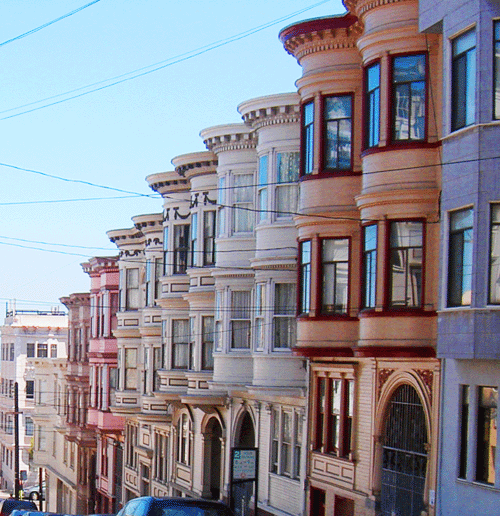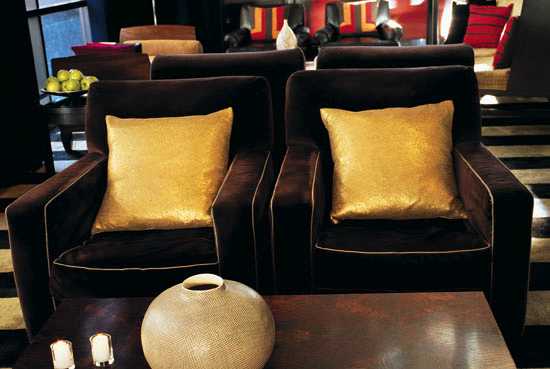Steve and Jim's San Francisco Vacation

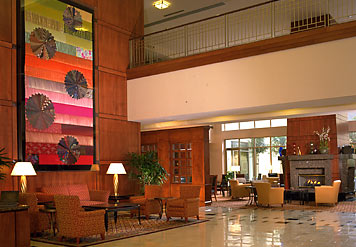

The Downtown Mariott was nice, not fancy, but the rooms were clean and the breakfast was good. Steven got most of the rooms on this trip for free by using points, so we couldn't complain.

That afternoon, we went to Yank Sing for a brunch of Deem Sum. The place had a fantastic fountain, where water fell four stories like rain onto a wide basin in the middle of the courtyard. As we left they were setting up for a Chinese wedding. The food was great, but no chicken feet. We got together with Risa and Rod who happened to be in town at the same time. Although this restaurant was not in Chinatown, it still got good reviews from Zagats. We wandered around the Embarcadero for a bit before having a drink at a bar with a good view of the bay bridge.





We went back to the hotel to take a nap, intending to rest up and then paint the town red. Steven woke up at 8:00 PM, Jim at 10:00 PM. We looked at each other, laughed, and decided to watch SNL and go back to sleep. We are pathetic old men.



The computer is programmed to direct driver and passenger on
a two-hour loop around the Fisherman's Wharf area, out to the Marina District through Golden Gate
Park and eventually down that part of Lombard known as the "crookedest street in the world."
Along the way, the computer plays recorded messages giving riders information,
such as the fact that they are driving in the neighborhood of comedian Robin Williams or that
liquefaction caused damage in the Marina District during the 1989 Loma Prieta quake,
or that Lombard isn't even the crookedest street in San Francisco.
Unfortunately the GPS system in our stopped working about 30 minutes into the tour
so we didn't hear any of this. GoCars sucks. We ended up trying to navigate ourselves
by the map.


Avoid the wax museums and the "I'm With Stupid" T-shirt stands,
and what's left are some of the best views in the city, fresh Dungeness crab and the
ever-amusing sea lions.
Last year, almost 12 million people made their way to the Wharf.
Oddly, this favorite spot, as they see it today, is only 30 years old.
Most of the major attractions -- the Cannery, Ghirardelli Square, Pier 39 --
were built in the late 1960s.

The Presidio served as a military post under the flags of Spain (1776-1822), Mexico (1822-48),
and the United States (1848-1994). As a U.S. Army post, the Presidio protected commerce and trade,
and played a logistical role
in every major U.S. military conflict from 1848 until closure.

The Golden Gate Bridge, completed after more than four years of construction
at a cost of $35 million, is a visitor attraction recognized around the world. The GGB opened to
vehicular traffic on May 28, 1937 at twelve o'clock noon, ahead of schedule and under budget,
when President Franklin D. Roosevelt pressed a telegraph key in the White House announcing the event.
The Golden Gate Bridge's 4,200 foot long main suspension span was a world record that stood for 27
years. The bridge's two towers rise 746 feet making them 191 feet taller than the Washington
Monument. The five lane bridge crosses Golden Gate Strait which is about 400 feet, or 130 meters, deep.



Above is what the bridge should look like, but this is all we could see of it, appearently July is a very foggy month in SF




The ruins just west of the Cliff House are the remains of the grand
Sutro Baths. In 1881, Adolph Sutro bought
most of the western headlands of San Francisco foreseeing the
growth of the city to the western shore. Five years later, Sutro Baths opened to a dazzled public
at a cost of $250,000. Spread over three acres, the artistic detail and engineering ingenuity were
impressive.
Today you can explore the remains of Sutro Baths and imagine the elegance of life here at the turn
of the century. The Baths became part of the Golden Gate National Recreation Area in 1980 and are
still popular for the scenic and recreational values recognized by Adolph Sutro over 100 years ago.





On land originally belonging to the Presidio, the Palace of Fine Arts was built in 1915 for the Panama-Pacific International Exposition. Today the site, which belongs to the City of San Francisco, features a classical Roman rotunda with curved colonnades in an idyllic park setting.
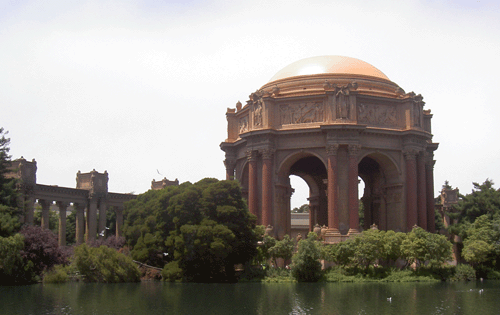
In 1915 Mrs. Alma de Bretteville Spreckels fell in love with the French
Pavilion at San Francisco's Panama Pacific International Exposition. This pavilion was a replica of
the Palais de la Légion d'Honneur in Paris, one of the distinguished eighteenth-century landmarks on
the left bank of the Seine.
Alma Spreckels persuaded her husband, Adolph B. Spreckels, the sugar magnate, to recapture the beauty
of the pavilion as a new
art museum for San Francisco.
At the close of the 1915 exposition, the
French government granted them permission to construct a permanent replica, but World War I delayed
the groundbreaking for this ambitious project until 1921



One of the finest examples of Victorian architecture in San Francisco
— a city famous for its Victorian homes — the 12,000 square-foot greenhouse is the oldest existing
glass and wood conservatory in the United States.
Opened to the public in 1879, the Conservatory
survived the 1906 earthquake
intact although it had suffered frequent structural damage from rot and fire—most notably in 1883
when a boiler explosion set the main dome on fire and completely destroyed it.






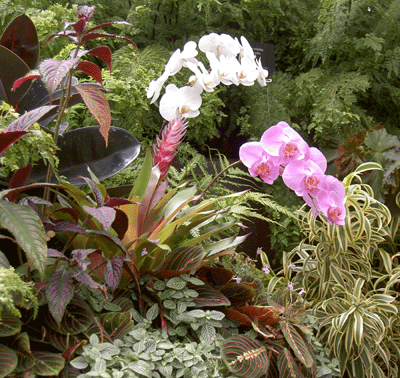


Often billed as the "crookedest street," San Francisco's Lombard Street is, in fact, neither the crookedest nor the steepest street in the city, let alone the world. Oddly, that fact doesn't deter the hordes of tourists who come every year to see this famous street, built with eight switchbacks on a 40-degree slope.






Named for its busiest street,
the Castro
District was the site
of strong gay activism during the 60s and 70s. The 1978 assassination of openly gay San Francisco
Supervisor
Harvey Milk was a watershed moment for the movement. Today, high housing prices and urban
flight have reduced the Castro to a region of high-end boutique and tourist shops that nevertheless
remains a must-see sight for gay travelers everywhere.

A National Monument Muir Woods preserves the last old growth coast redwood forest in the San Francisco Bay Area. The cool moist forest supports a surprising abundance of plant and animal life, from the coast redwood (the tallest type of tree on Earth), to the slimy banana slug, from the amazing Coho salmon to delicate trilliums. This forest refuge welcomes visitors from all over the world to experience the magic of the redwood forest.







Bartholomew Park Winery was founded in 1994. This vinyard produces Cabernet; hand made, micro-lot, single vineyard wines sold only at the winery. The focus is on the mesoclimates of the western face of the Mayacamas mountains, a region challengling the preeminence of Bordeaux with complex, distinctive wines worthy of cellaring.

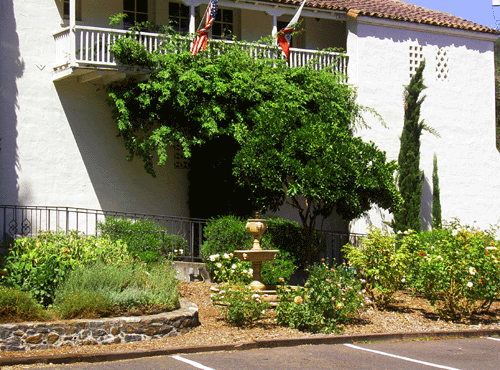

Opened in 1976, Ravenswood markets its wine to a younger crowd, but the wine is still good. A nice guy gave us a behind the scenes tour. Steven thought we could have seen his grapevine (nudge, nudge, wink wink)



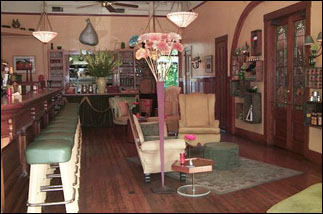

Downstairs from The Sonoma Hotel, it's relaxed and unpretentious and known for its wine list, which focuses on Rhone varietals. It's a comfortable place with an immense bar on one side that was brought from the East Coast in the 1920s. The food is more or less country French--mussels steamed in garlic and Pernod, crab cakes with a pretty celery root and beet salad, charcuterie and cheese platters. For main courses, there is Liberty duck confit, which could have been crisper, steak frites and a grilled pork chop in a fig glaze. For dessert there's a demure chocolate pot de creme and profiteroles with vanilla ice cream and a bittersweet chocolate sauce.

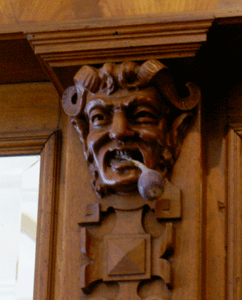

Jim messed up with the directions so we only ended up going to two wineries. We finished with dinner early and decided to go see the remake of Willy Wonka. Call me old-fashioned, but I think the midgets from the first version made much better Ompa-Lumpas than the CGI little people in the new version
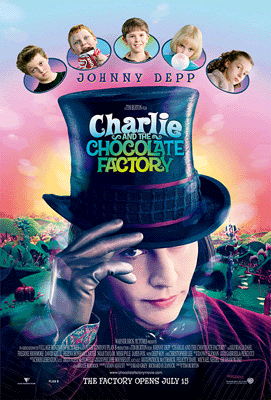


Our 2002 Domaine Carneros Pinot Noir is complex and elegant with rich fruit tones of black cherry, cassis and violets overlaid with notes of chocolate, smoke and East Indian spices. Round forward fruit on the nose is followed by an extraordinarily balanced palate adding richness, body and a long velvety finish to this wine.


Designed and built in 1886 by a Scottish sea captain Hamden McIntyre,
the winery was originally known as Eshcol. He designed it to use a "gravity-flow" system.
A horse-drawn winch would bring grapes to the third floor for crushing; gravity would then carry
the juice to the second floor for fermenting and eventually to the first floor for aging.
The winery was heralded in the local papers of the time as a "model farm".
This winery's only real claim to fame is that it is the first one North of Napa. The wines were
truely substandard, you might as well have put grain alcohol in Welches grape juice.



The 2002 vintage boasts lush aromas of blueberry, cherry, blackberry, vanilla and sweet cream. The rich, silky mid-palate is notable for its structure and weight. This Cabernet Sauvignon has an expansive finish laced with flavors of vanilla and blackberry jam. With its firm, well-structured tannins, it may be enjoyed now or cellared for 10 years or more.




To make up for the previous day, Jim agreed to go to an Indian casio. He didn't realize that this would mean an hour drive over a mountain to get to it (think the Donner party).
The atmosphere is casually refined, informal and very down to earth, "California fun" is our style and personality. The restaurant has two huge brick fireplaces, one of them is double-sided providing diners with a warm, cozy, inviting atmosphere during the cool season. Outside on the deck, is one of the most beautiful creekside dining areas in Napa, very enjoyable during the warm weather months.

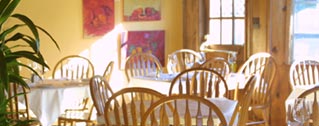

Steven swears that this woman was a trans-sexual. She was tall, and broad sholdered, and could well have been a former man.


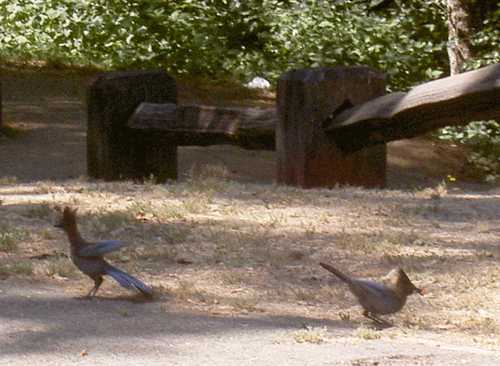


The Coast Redwood,
(Sequoia sempervirens), is native to the Pacific Coast from southern Oregon to central
California, extending not more than 50 miles inland.
Humboldt Redwoods State Park is located in the heart of the coast redwood forest area in the
Eel River Basin of northern California. Within the park’s 53,000 acres, there are more than
17,000 acres of old-growth forest. Rockefeller Forest, close beside Bull Creek and the Eel River,
is one of the largest remaining tracts of contiguous uncut coast redwood forest in the world.
The entire Bull Creek watershed lies within the park. These areas provide valuable habitat for
old-growth dependent plant and animal species, including anadromous fish.
Coast redwood follows the fog and grows best at less than 2,000 feet elevation in areas of heavy
winter rains and moderate year round temperatures. They are the world’s tallest living things.
Some of them tower above 360 feet. The name, Sequoia sempervirens, is Latin for "ever living" –
an appropriate name for these trees since many are 600 to 1200 years old and some have lived more
than 2,000 years!



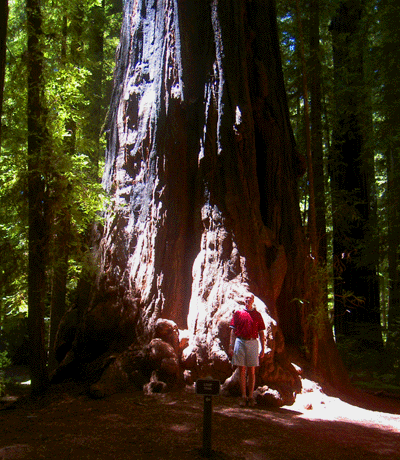

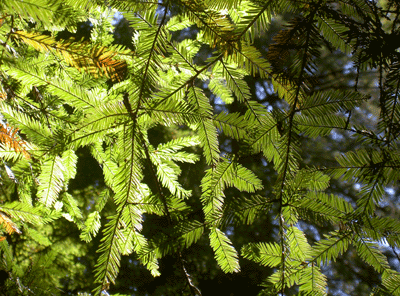

a historic hotel located on the banks of the Eel River in Humboldt
County, California. Listed on the National Register of Historic Places, this world-class Tudor-style
inn is known for exquisite fine dining, Old-World ambiance, and provides the perfect setting for a
romantic getaway.
Just minutes away from the breathtaking vistas of the Lost Coast and majestic old growth redwood
forests along the Avenue of the Giants, the Benbow Inn is the perfect place to find total relaxation.




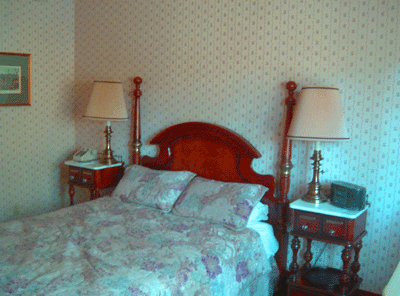




On the way back to San Francisco, we visited the famous drive-through tree, and then stopped at another Indian casino (for Steven) and another winery (for Jim). Jeriko was picked at random, but actually turned out to be a good choice. The wine was good and the bored woman behind the counter was very friendly. The place was owned by one of the Fetzer offspring who could no longer use the family name because of a non-compete agreement with the curent owners of the Fetzer name. Before we went back into the city, we went up to the Marin Headlands, which offered a spectacular view of the Golden Gate Bridge


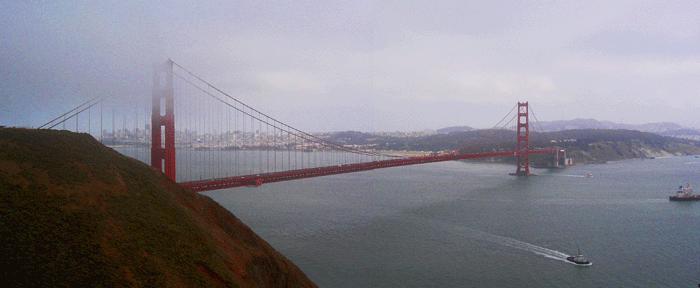
The Coit Tower was built in 1933 with funds from Lillie Hitchcock Coit. She was an eccentric personality who was best known for her support of the local firemen. After she died, she left one third of her fortune for the beautification of the city. The result was the Coit Tower, which is both a memorial for Lillie Hitchcock Coit and for the San Francisco firemen. The concrete tower was constructed by Arthur Brown Jr., who also built the beautiful City Hall.

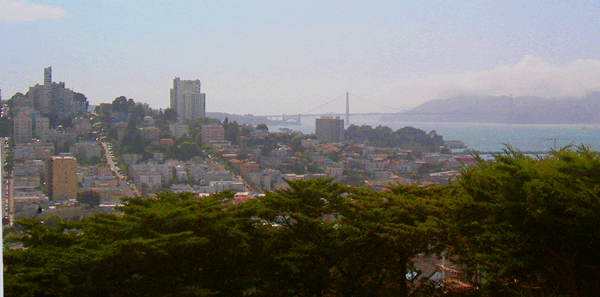






On Friday morning, we took the trolly cars to Fisherman's Wharf and back, stopping
in China Town on the way. Notice the name of the store. On the way back, we sat next to a fat man and his
little German boy-toy. It was revolting, and yet oddly compelling at the same time.
We Stayed at the W Hotel for our final night. The W was very cool, but seemed to try too hard to be cutting edge.

